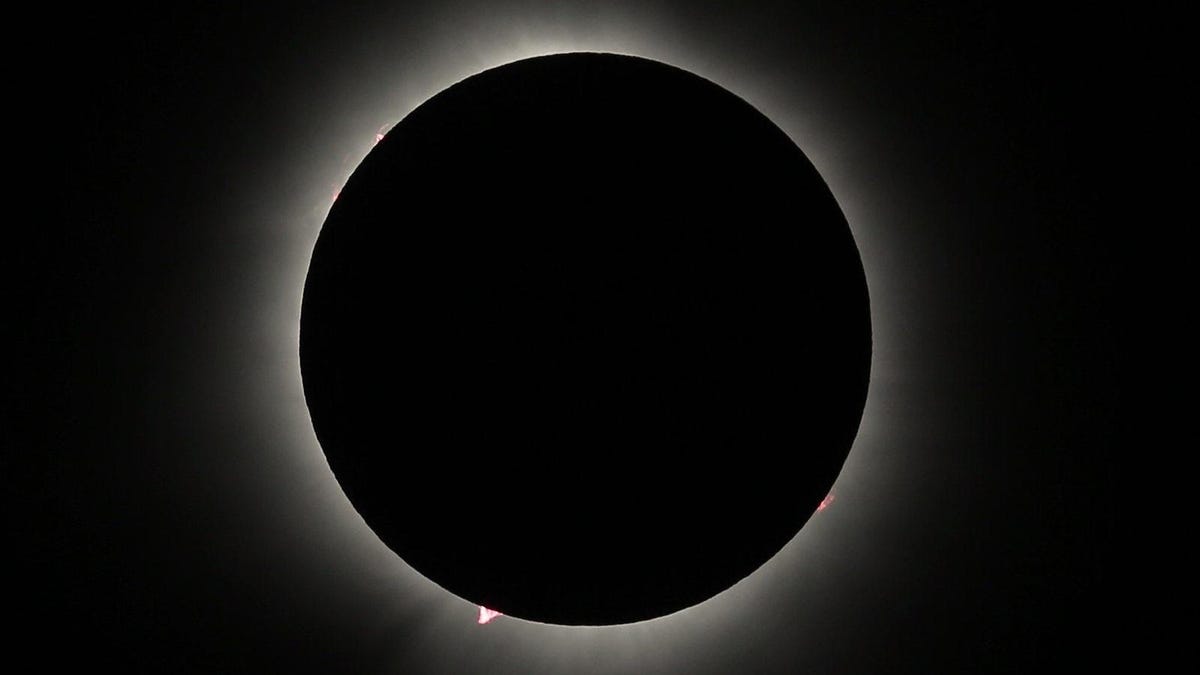Solar Prominences: A Spectacular Solar Event
Yesterday, the Sun greeted us with a captivating display of its dynamic and vibrant nature, signaling a peak in its 11-year cycle. This phase is marked by heightened solar activity, increasing the chances of intriguing phenomena such as solar eruptions.
Not the Usual Suspects
Contrary to expectations, what we witnessed was not the typical occurrences associated with solar phenomena such as Baily’s Beads or the Diamond Ring phase of an eclipse. It wasn’t even a solar flare, the sudden and intense burst of electromagnetic radiation from the Sun’s surface. Instead, our celestial visitor treated us to a mesmerizing solar prominence – a reddish or pinkish structure extending from the Sun’s edge.
These prominences come in various shapes and sizes, ranging from small loops to large, complex structures that span significant portions of the solar edge. Although they are distinct from solar flares, both phenomena are more prevalent during the Sun’s solar maximum phase.
A Rare Sight
Observers of total solar eclipses eagerly anticipate the opportunity to study the Sun’s corona directly when the Moon’s shadow perfectly aligns with the Sun, providing an unobstructed view of the outer atmosphere. This alignment allows astronomers and enthusiasts alike to witness these remarkable stellar features without the need for specialized equipment or space-based observatories.
During yesterday’s eclipse, lucky spectators within the path of totality were rewarded with the sight of solar prominences. These included a bright red speck at the bottom of the Sun and smaller beads along its sides. While astrophotographers captured the loop-like structure of the prominence, ground observers marveled at the unusually bright red dots along the Sun’s perimeter.
Prominences, unlike solar flares, are anchored to the Sun’s surface and extend into the corona, composed of plasma containing electrically charged hydrogen and helium. These remarkable structures, also known as filaments, can take a day to form and last for several months, creating loops that stretch hundreds of thousands of miles into space.
A Stellar Outburst
The mesmerizing red loops visible during solar prominences are a result of plasma flowing along twisted magnetic fields generated by the Sun’s internal dynamo. An erupting prominence occurs when these structures become unstable, releasing plasma and creating a stunning display of solar activity. Witnessing these tiny red dots during yesterday’s eclipse was a unique opportunity to observe a stellar outburst firsthand.
As we gaze upon the wonders of the cosmos, moments like these remind us of the intricate beauty and dynamic nature of our closest star. Yesterday’s solar prominence serves as a testament to the perpetual dance of celestial bodies and the awe-inspiring phenomena that grace our skies.
More: Photos: Great North American Solar Eclipse
Image/Photo credit: source url





